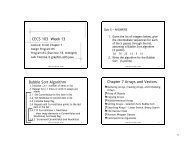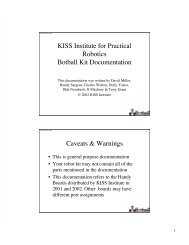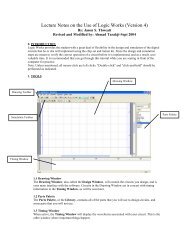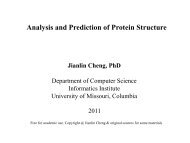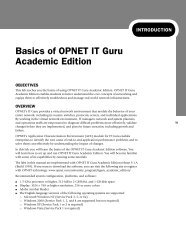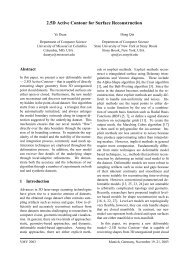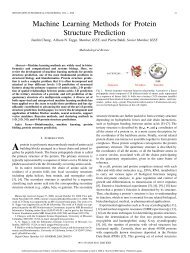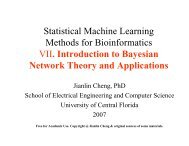Chapter X: Introduction to Fuzzy Set Theory Uncertainty is universal ...
Chapter X: Introduction to Fuzzy Set Theory Uncertainty is universal ...
Chapter X: Introduction to Fuzzy Set Theory Uncertainty is universal ...
You also want an ePaper? Increase the reach of your titles
YUMPU automatically turns print PDFs into web optimized ePapers that Google loves.
Example X.2. As an example, synthetic data was used <strong>to</strong> verify th<strong>is</strong> approach. Parameters for the<br />
multiplicative hybrid opera<strong>to</strong>rs were randomly generated and assigned <strong>to</strong> each node. Then, a table of<br />
1000 input values was randomly generated and corresponding outputs were calculated from successive<br />
applications of Equation X.5. The training data cons<strong>is</strong>ted of 800 data points and the test data had 200 data<br />
points. Table X.3 shows a sample of the training and test data from one experiment while Table X.4<br />
shows the original and recovered hybrid parameters. With an easy and effective training mechan<strong>is</strong>m,<br />
such fuzzy aggregation networks are attractive <strong>to</strong>ols for hierarchical confidence fusion. Besides the<br />
ability <strong>to</strong> approximate input/output training data, an additional advantage of these networks <strong>is</strong> that after<br />
training, each node can be associated with a lingu<strong>is</strong>tic connective (d<strong>is</strong>junction, conjunction, mean), based<br />
on the corresponding value of γ, and the weights give an indication of the importance of the particular<br />
criteria <strong>to</strong>wards the fused result.<br />
Table X.4 Actual and recovered parameters corresponding <strong>to</strong> Table X.3.<br />
Parameter Actual Recovered<br />
Node<br />
1<br />
δ 1 0.440 0.446<br />
δ 2 1.559 1.553<br />
γ 0.255 0.341<br />
Node<br />
2<br />
Final<br />
Node<br />
δ 1 0.161 0.163<br />
δ 2 1.838 1.836<br />
γ 0.180 0.198<br />
δ 1 0.786 0.816<br />
δ 2 1.213 1.183<br />
γ 0.0846 0.028<br />
Exerc<strong>is</strong>es<br />
x. A trapezoid membership function <strong>is</strong> defined by 4 parameters a < ≤ b c < d. (If b = c, you have a<br />
triangular function). Define the equations for trapezoid and triangular fuzzy sets over a fixed interval of<br />
reals, [r, s]. Note that these membership functions do not need <strong>to</strong> be symmetric about the “center”. What<br />
happens if b < r? What about s < c?<br />
Let X = [0, 10]. Define and draw the graphs of the Trap(x; 1,2,3,5), Trap(x; 3,5,7,9), Trap(x; 8,9,9,10),<br />
Trap(x; -2,-1,3,5) and Trap(x; 8,9,11,12).



